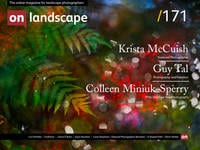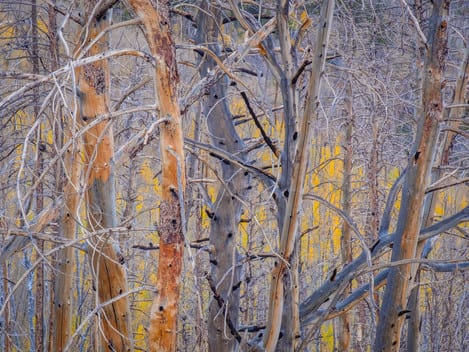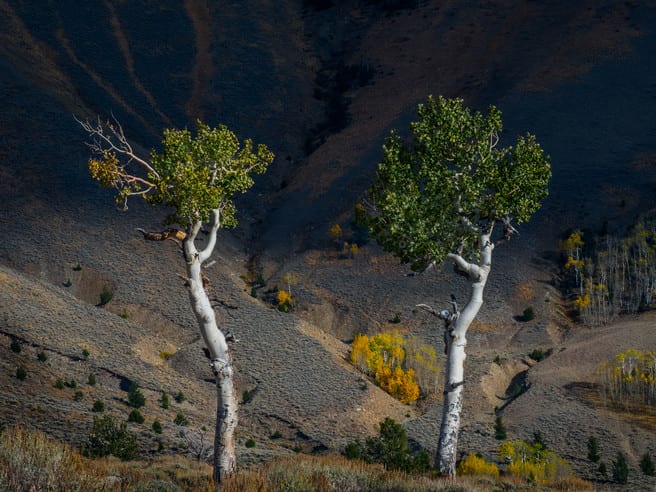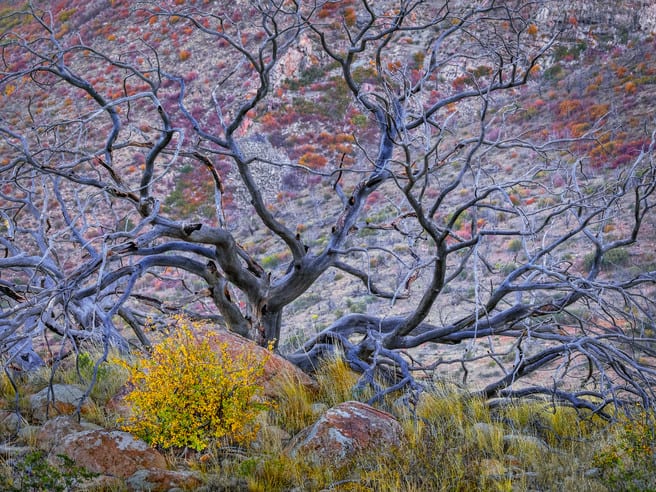On Photography and Freedom
You have no responsibility to live up to what other people think you ought to accomplish. I have no responsibility to be like they expect me to be. It's their mistake, not my failing. ~Richard Feynman
Declining an offer to become a staff photographer for LIFE Magazine, Ernst Haas wrote to then-editor Wilson Hicks, “There are two kinds of photographers—the ones who take pictures for a magazine to earn something, and the others who gain by taking pictures they are interested in. I am the second kind.”
Explaining his reasons for turning down what was ostensibly a dream job, Haas wrote, “I have always felt better taking a risk than an easier route for what I believe in. . . . What I want is to stay free, that I can carry out my ideas. . . . I don’t think there are many editors who could give me the assignments I give myself.”
Like Haas, I also consider myself among the “second kind.” I’m also fairly certain that no editor would give me the kind of assignments I give myself, which generally involve wandering in wild places without plans, goals, or expectations; mindful of experiences, thoughts, sensations, and encounters that on occasion inspire a photograph or a piece of writing about some topic not known in advance.
What, then, are the things that second-kind photographers “gain by taking pictures they are interested in,” that are significant enough to warrant declining a prestigious job offer? Some of these gains, such as satisfaction, popularity, awards, perhaps even sales, are self-evident, although these are available to any photographer. What distinguishes first-kind photographers (those who make photographs to satisfy others, or in submission to the influence of others) from second-kind photographers (those who pursue their work primarily out of personal interest)? The answer is in Haas’s letter, if perhaps subtle: second-kind photographers are free to carry out their own ideas—to choose, by whatever criteria they set for themselves, those things they find most worthy of photographing, and to do so as a matter of course.
The distinction between the two “kinds” is not unique to photography. Long before Haas wrote his letter, painter and educator Robert Henri, in a piece titled, “To A Teacher,” expressed a remarkably similar sentiment. He wrote, “There are two classes of human beings. One has ideas, which it believes in fully, perhaps, but modifies to bring about ‘success.’ The other class has ideas which it believes in and must carry out absolutely; success or no success. The first class has a tremendous majority, and they are all slaves. The second class are the only free people in the world.”
Freedoms come in two complementary forms: there are freedoms from, and there are freedoms to. One must be free from such things as tyranny, coercion, destitution, anxiety, need, insecurity, etc., in order to be free to pursue such things as meaningful experiences, education, art, photography, etc. A first-kind photographer must, by necessity, forfeit some freedoms (both from and to) in order to satisfy, or submit to, the demands or expectations of others. A second-kind photographer (if free to have a say in the matter), if at all constrained, is only constrained by choice.
Certainly, one must be in a privileged position of having freedom from certain conditions and obligations, in order to have the freedom to be a second-kind photographer. But it is also true that some who have (at least a degree of) such freedoms, for various reasons still choose to pursue photography as a first-kind photographer—within constraints and expectations imposed by others. This is not meant as a condemnation. In fact, it illustrates well the point that freedom does not always culminate in happiness or prosperity, and thus may not appeal to everyone. When one is free to make choices in defiance of expectations, rites, or traditions, one must also be prepared to accept the consequences of such choices, which at times may be severe.
“Anxiety is the dizziness of freedom,” wrote Søren Kierkegaard. It is a lesson I learned on several occasions. One such occasion of note was the time I decided to resign my former corporate career to pursue a new life as an artist, writer, and wanderer. Faced with the freedom to make my own choices—and to wager my lifestyle and livelihood on these choices—I nearly had a nervous breakdown. For a long time, the anxiety of living without a regular paycheck remained palpable, spoiled my experiences, and kept me awake at night until I came to accept the risks and uncertainties of my new life as the “cost of admission” for the kind of work—more important, the kind of life—that interests and inspires me.
You may wonder what I gained by my choice, by the ostensibly alluring freedom to pursue my interests unhindered, coupled inextricably with the much-less-alluring freedom to bankrupt myself by some failed endeavour or ill-conceived decision. What I gained is life: more time to spend, and more rewarding (to me) experiences to spend it on. I gained the freedom to be myself, to go about the world as myself; and, for as long as I can sustain it, the freedom to dedicate my life—the majority of my hours and days—to things that are meaningful, important, interesting, and satisfying to me. Certainly, I gained a lot of anxiety, too.
My point here is not to urge readers to go to extremes but to point out that most of us are free to be second-kind photographers if we so choose—to pursue our interests without regard to trends, influences, traditions, and expectations that may not accord with our sensibilities and goals. Also, we are free to question our goals and the degree to which they are, indeed, our goals, and to change them as we see fit. Creative work, communing with natural places and lives, indulging in beauty and deep thoughts—all these are available to us to experience and to engage with according to our sensibilities, without deference to expectations and outside influences. And of course, each of us has the freedom to decide what to aim our cameras at, and what to do with our images.
Why be a first-kind photographer—a photographer who sets aside creative freedom in favour of impressing others, one who complies with rules and constraints set by others, accepting them as inalienable—when you don’t have to? When you have the choice to be a second-kind photographer—a photographer free from undesired impositions, and free to practice and to experiment on your own terms and according to your own interests.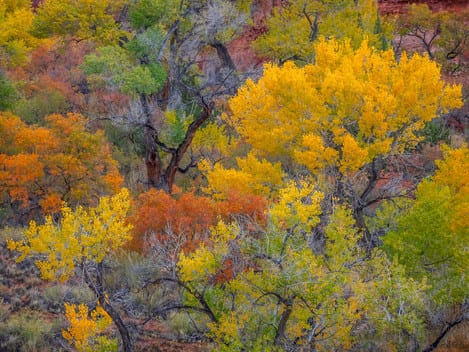
Reclaim whatever time you spend imitating, keeping up, following, arguing, competing, and placating.
Friedrich Nietzsche wrote, “Independence is for the very few; it is a privilege of the strong. And whoever attempts it even with the best right but without inner constraint proves that he is probably not only strong but also daring to the point of recklessness.” Perhaps an intimidating thought in the context of such things as relationships, employment, finances, or beliefs; but when it comes to art; when it comes to creative expression; when it comes to the ways in which each of us chooses to pursue photography, why not? Why not be independent? Why not be daring to the point of recklessness? Why not proclaim, too, “I am the second kind”?

